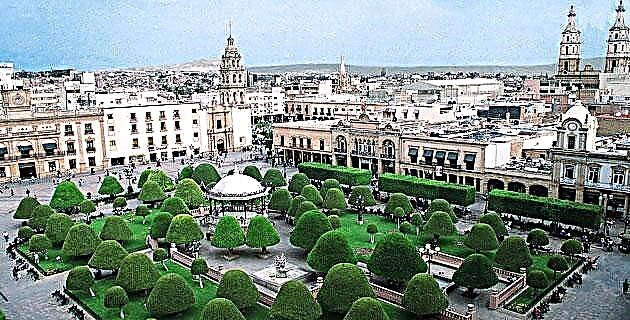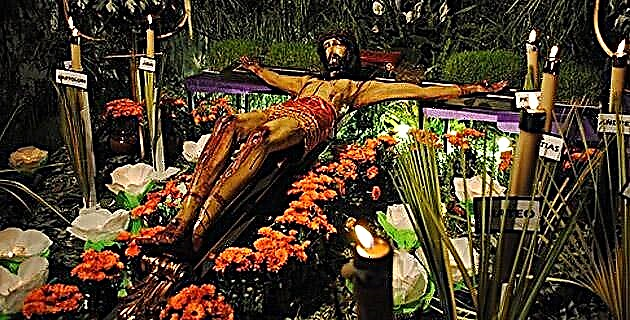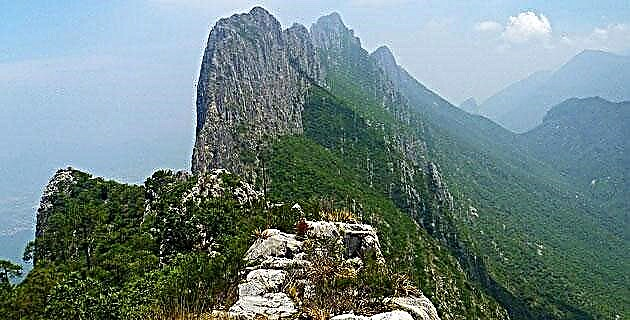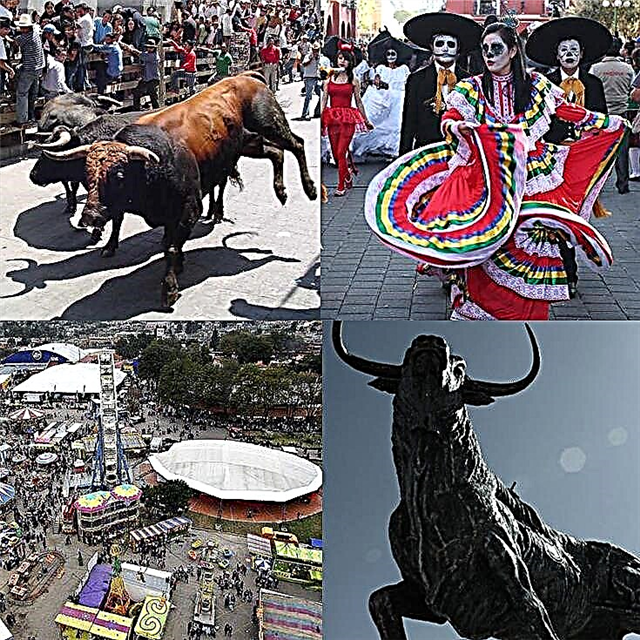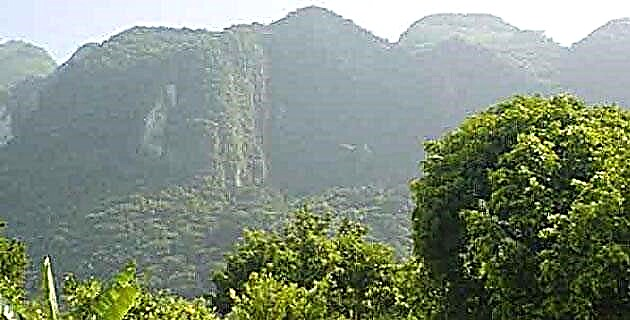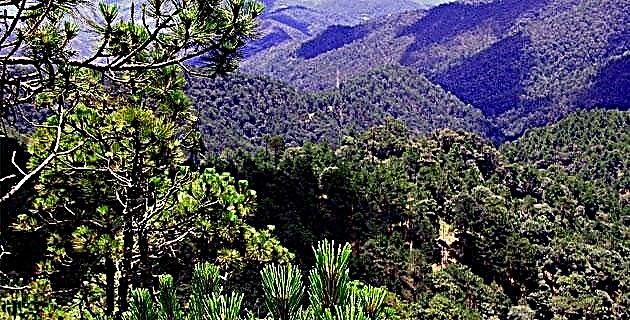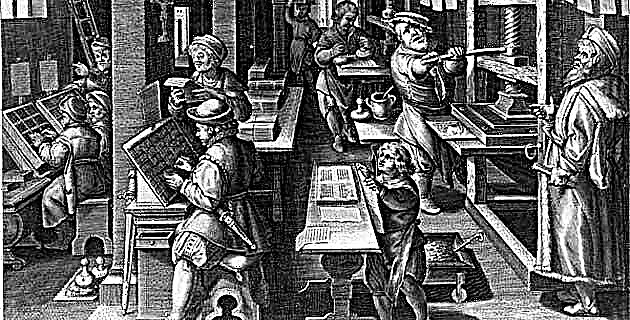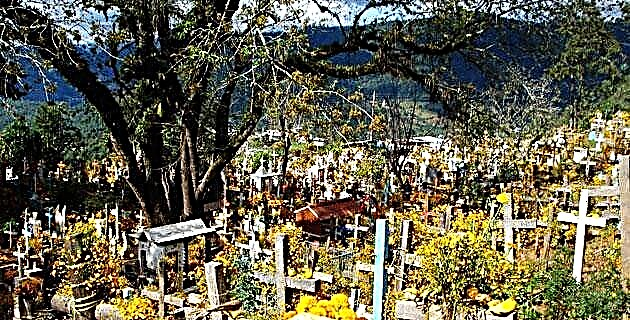
Ayutla, despite time, maintains pre-Hispanic traditions due to the isolation in which its rugged terrain had it. Surrounded by mountains, between thick fog and coniferous forests, is Ayutla, a Mixe town where the feast of the dead is celebrated in a very peculiar way.
Among the deep ravines formed by the Zempoaltepetl knot in the northwest of the state of Oaxaca, live the Mixes, an ethnic group whose uses and customs are steeped in the deepest tradition. With a few exceptions, Mixe peoples are situated on steeply sloping peaks and cliffs with elevations above sea level that fluctuate between 1,400 and 3,000 m. The terrain conditions and the rushing rivers make communications difficult in this region, which consists of 17 municipalities and 108 communities, the most important being Cotzocón, Guichicovi, Mazatlán, Mixistlán, Tamazulapan, Tlahuitoltepec, San Pedro and San Pablo Ayutla and Totontepec.
The first Spanish incursion into Mixe territory was carried out by Gonzalo de Sandoval in 1522, and later the area was the scene of successive invasions, one of which led to the confederation of all the peoples of the region: Mixes, Zoques, Chinantecs and Zapotecs.
Around 1527 the natives were defeated by the Spanish after bloody battles, and this fact marked the beginning of their rule over the Mixe area. However, the missionaries were more successful than the soldiers and around 1548 they began their work of evangelization. Throughout the sixteenth century, the Dominican province of Oaxaca managed to found four vicariates in the region, and by the end of the century the congregation and Christianization of most of the towns had been achieved.
Throughout the Colony and until the 19th century, possibly due to its low economic importance and inaccessibility, the Mixe territory was not taken into account by the conquerors and it remained oblivious to the most important social movements, and it was not until the Revolution of 1910 when the struggle for the autonomy of Oaxaca involved participating in the political life of the state.
In our days the ethnic group is immersed in the general problems of the country, and specifically in that of the state of Oaxaca. Migration in search of economic alternatives is significant and desertion to development centers is such a common phenomenon that some villages are practically abandoned when their inhabitants temporarily emigrate.
The Mixes of the cold zone grow mainly corn and beans on their rainfed lands; In some populations with an intermediate or warm climate, they also sow chili, tomato, pumpkin and potato; however, due to the difficulty in marketing these products, their distribution remains in the hands of intermediaries. From an economic point of view, the most important crops in this town are coffee, which allows them a significant income, and barbasco, a wild plant that grows in abundance and is sold to the chemical industry for the production of hormones.
It is important to note that among the Mixes there is still a traditional religious organization based on the cargo system that begins with the topil until reaching the most important: the mayordomo. The high cost of holding certain positions only allows their performance for one year, despite the fact that in some cases the election is for three. Political positions such as topiles, policemen, corporal of vara majors, majors, commander, regidor de vara, trustee, president and mayor, are interspersed with religious, being an important requirement for political ascent to have rigorously performed the ladder positions.
However, this situation has changed in recent years due to the appearance of Protestant groups that have interfered in the activities and ceremonies of traditional and Catholic ritual. Likewise, political activity has been strongly influenced by the different parties, which now appoint public positions.
Alfonso Villa Rojas said in 1956 that given the conditions in which the Mixes have lived for centuries, their uses, customs and beliefs are saturated with pre-Hispanic survivals. The worship of their deities remains in force: the gods of the wind, rain, lightning and earth are frequently mentioned in the prayers and ceremonies they perform in sacred places such as caves, hills, springs and rocks of special shapes, They are considered representations of some deity, or at least residence of the same.
The occasions to perform rites and ceremonies are multiple, but the religious attention of the Mixes is preponderantly occupied by the acts that mark the life cycle, those that occur from birth to death, as well as those that have a connection with the cycle. agricultural. It is interesting to note that the group of the few in Mexico that still conserves a ritual calendar composed of 260 days with months of 13 days and five considered disastrous, whose knowledge and management is in the hands of specialists, fortune-tellers and "lawyers."
MUSIC
One of the most outstanding features of Mixe culture is its musical sense; in the performances of traditional and mestizo music, the members of the Mixe bands express all the sentiment of their ethnic group.
Since pre-Hispanic times, the use of wind and percussion instruments was already traditional among the Mixes. Codices, ceramics, frescoes and chronicles tell us about the type of instruments they used, and it is specifically known that they fulfilled a religious, civil and military function. However, music also suffered the impact of the Conquest, and new instruments such as trumpets, drums and fifes, harps and vihuelas were combined with chirimías, huéhuetl, snails and teponaztlis giving rise to new sounds.
Oaxaca shares the long musical history of the rest of Mexico, and Oaxaqueños are a music-loving people who have produced magnificent composers. The variety in the indigenous music of this state is enormous; It is enough to remember the richness of themes, styles and rhythms that are danced in the Guelaguetza.
It was Porfirio Díaz who took care to develop some of the best bands in his native state, and commissioned Macedonio Alcalá –author of the waltzDios never dies, an Oaxacan anthem by the way-, the direction of the Conservatory and public musical instruction. The indigenous gangs then reached their maximum splendor and still play a very important role in the communities of the states of Oaxaca, Morelos and Michoacán.
Music has reached extraordinary relevance among the Mixes; There are towns in the area where children learn first to read music than words. In some of them the entire community helps to make the band the best in the region, but as resources are very scarce, it is not always possible to have new instruments or to maintain existing ones. Therefore, it is not uncommon to see instruments repaired with rubber bands, pieces of wood, threads, bicycle tire patches, and other materials.
The repertoire of the mixes bands is very wide and a large part of it is made up of musical expressions such as sones, syrups and music from other regions of the country, although they also perform works of an academic nature such as waltzes, polkas, mazurcas, double steps, pieces of operas, zarzuelas and overtures. Currently, there are several young Mixes studying at the Conservatory of Mexico City with a recognized and indisputable capacity.
PARTY OF THE DEAD
The life cycle culminates with death and the Mixes consider that the latter is just one more step in existence, and therefore some ceremonies must be performed. When the death occurs, in the place where the relatives of the deceased took place they make an ash cross on the ground which they sprinkle with holy water and which will remain there for several days. Wakes are lit with candles, because they think their light helps souls find their way; It is prayed throughout the night and coffee, mezcal and cigars are offered to those attending. The death of a child is cause for rejoicing and in some towns they dance all night long because they suppose that their soul has gone directly to heaven.
As the month of November approaches, preparations begin for the placement of the offerings with which the Mixes worship their ancestors, entertain them and wait to share with them the fruits of the harvest and work. This tradition that is repeated annually, is impregnated with the flavor of the old, and in this area it has special characteristics.
In the thick mist of the mountains, on the cold mornings at the end of October, the women hurry to get to the market and buy everything they need for the offering: yellow and fresh marigolds, red and intense lion's hand, candles and candles of wax and tallow, aromatic copal, oranges, sweet apples and scented guavas, cigars and leaf tobacco.
With time you have to graze the corn, prepare the dough for the tamales, order the bread, choose the images, wash the tablecloths and adapt the spaces, the ideal being a large table in the most important room of the house. Musicians are also getting ready; Each instrument is treated with respect, cleaned and polished to be played at the party, because with each note issued the ties of kinship are restored and the bases of the relationship between the living and the dead are established.
On October 31, the family altar should already be adorning with flowers and candles, perfuming with copal and with food, drinks, fruits and objects that were to the taste of the faithful departed. The bread deserves a special mention, decorated with sugar flowers in various colors, angels' faces made up with aniline and mouths painted in deep red and geometric shapes in which all the creativity of the bakers is expressed. This night is for recollection; only the crackling of the coals where the copal is burned breaks the peace.
It is interesting to note that the Mixes are one of the few groups that still have a ritual calendar consisting of 260 days, with months of 13 days and five considered disastrous.
Although in our days the Mixe ethnic group is immersed in the general problems of the country, it still preserves many of its ancestral traditions intact.
On the first day of November, people go out to the streets to look for their relatives, the compadres are invited and they are offered steaming and appetizing chicken broth to combat the cold, as well as freshly made bean tamales, tepache and mezcal. Memories, laments, jokes are made about deceased relatives, and perhaps a family member will become sad and the comment will come up: “his soul is difficult to come to this party because he stayed to take care of his house in elmucu amm (name given by the Mixes to hell), down there in the center of the earth. This comment reflects the conception of the world, the worldview of the group: they still place the underworld in the center of the earth as it was done in pre-Hispanic times.
On All Saints' Day, the rolled tamales, the yellow tamales of beef, fish, rat, badger and shrimp are ready; three or four 80-liter tepache pots; one or two cans of mezcal, many packets of cigars and leaf tobacco. The party will last eight days and the bands are getting ready to play the music chosen by the relatives in the church and in the pantheon.
Cleaning graves and decorating them is a sacred task; the atmosphere of the area lends itself to devotion: the mist spreads over the town while a solitary musician plays the trumpet on the way just traveled. In the church the band plays incessantly while in the pantheon there is more activity: the gray of the tombs and the dry land begin to turn into the bright yellow of the flowers and the graves are decorated by letting the imagination run wild to build a place worthy of the dead people.
Children imitate, play in children's bands, become infected with ancient customs and begin their learning by going from house to house eating the offerings: ancestral recipes prepared by the skillful hands of their mothers and grandmothers, guardians of tradition, reproducers of the culture, indigenous hands that year after year offer and entertain their dead.

